Heinz Budweg | |
|---|---|
| Born | Heinz Budweg 1 May 1940 |
| Nationality | German (Brazilian citizen) |
| Known for | Painting |
Heinz Budweg (born 1 May 1940) is a German painter who currently resides in Sao Paulo, Brazil. Budweg is considered the best living artists in the speciality of painting the Indians of the Amazon Forest.
Born in Berlin, Germany, in 1940, Budweg immigrated to Brazil in 1953. He established himself in São Paulo, and he immediately started to demonstrate interest in the Brazilian Indian population. He has travelled many times to the Amazon Forest, as well as the Alto Xingu and the Marajó Island, always to look for inspiration. He has painted a vast collection of Indians portraits. He also won a Jabuti Trophy, one of the most prestigious awards in Brazil, thanks to his work in Lendas Brasileiras (Brazilian Legends), a book dedicated for children.
He became a Brazilian citizen in 1958.
His work was exposed in Brazil, Germany, Italy, the United States and Switzerland. Some of his paintings are permanently exposed in the Munch Art-Gallery, in Munich, Germany.

Amazonas is a state of Brazil, located in the North Region in the north-western corner of the country. It is the largest Brazilian state by area and the ninth-largest country subdivision in the world. It is the largest country subdivision in South America, being greater than the areas of Chile, Paraguay, and Uruguay combined. Mostly located in the Southern Hemisphere, Amazonas is the third-largest country subdivision in the Southern Hemisphere after the Australian states of Western Australia and Queensland. Located entirely in the Western Hemisphere, it is the fourth-largest country subdivision in the Western Hemisphere after Greenland, Nunavut, and Alaska. If independent, Amazonas could become the sixteenth-largest country in the world, slightly larger than Mongolia. Neighbouring states are Roraima, Pará, Mato Grosso, Rondônia, and Acre. It also borders the nations of Peru, Colombia and Venezuela. This includes the Departments of Amazonas, Vaupés and Guainía in Colombia, as well as the Amazonas state in Venezuela, and the Loreto Region in Peru.
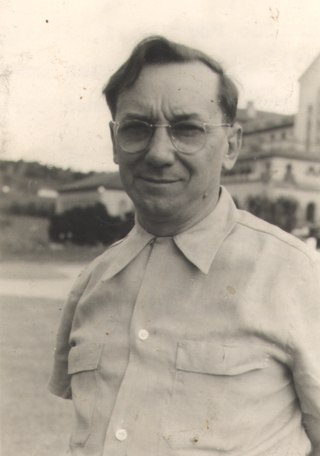
Candido Portinari was a Brazilian painter. He is considered one of the most important Brazilian painters as well as a prominent and influential practitioner of the neo-realism style in painting.
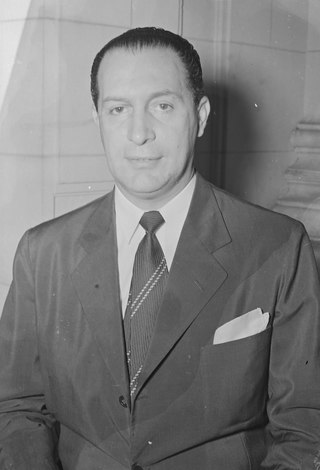
Pascoal Ranieri Mazzilli was a Brazilian politician who served as Federal Deputy from 1951 to 1967 and President of the Chamber of Deputies from 1958 to 1965. During his term as speaker of the house, he served twice as interim president of Brazil for a few weeks, first in 1961, after the resignation of Jânio Quadros, and again in 1964, after Goulart, who had then succeeded him as president, was deposed in the military coup d'état of that year.
Fábio Rogério Innecco is a Brazilian painter, landscaper, researcher and assistant to graphic arts. Innecco was born in the city of Niterói, Rio de Janeiro. Between 1958 and 1963 he took lessons in drawing with Abelardo Zaluar and lessons in painting with Henrique Cavalheiro. At this time he took a course at the National School of Fine Arts at the Federal University of Rio de Janeiro (UFRJ). His work is cited in the Brazilian Dictionary of Arts, published by the Book National Institute of the Education and Culture Ministry (MEC) in the book by Frederico de Moraes: Chronology of Arts in Rio de Janeiro and in the book "Niterói and its painters.

Ismael Nery was a Brazilian artist.
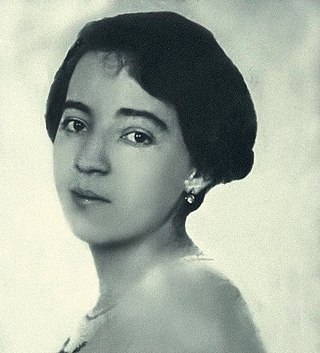
Anita Catarina Malfatti is heralded as the first Brazilian artist to introduce European and American forms of Modernism to Brazil. Her solo exhibition in Sao Paulo, from 1917–1918, was controversial at the time, and her expressionist style and subject were revolutionary for the complacently old-fashioned art expectations of Brazilians who were searching for a national identity in art, but who were not prepared for the influences Malfatti would bring to the country. Malfatti's presence was also highly felt during the Week of Modern Art in 1922, where she and the Group of Five made huge revolutionary changes in the structure and response to modern art in Brazil.

Alfredo Volpi, was a prominent painter of the artistic and cultural Brazilian modernist movement. He was born in Lucca, Italy but, less than two years later, he was brought by his parents to São Paulo, Brazil, became a Brazilian citizen, and lived there for the majority of his life. He was one of the most important artists of the so-called Grupo Santa Helena, formed in the 1930s with Francisco Rebolo, Clóvis Graciano, Mario Zanini, Fulvio Pennacchi, and others.
Tio Tjay was an Indonesian painter who for a long time has reside in Brazil. At a very young age, young Tio Tjay enjoy studying Chinese painting and calligraphy. His talent for art was already sensed by people at youth.

The creation of art in the geographic area now known as Brazil begins with the earliest records of its human habitation. The original inhabitants of the land, pre-Columbian Indigenous or Natives peoples, produced various forms of art; specific cultures like the Marajoara left sophisticated painted pottery. This area was colonized by Portugal in the 16th century and given the modern name of Brazil. Brazilian art is most commonly used as an umbrella term for art created in this region post Portuguese colonization.

Pedro Weingärtner was an important Academic painter of Brazil, and the first artist born in Rio Grande do Sul to win international praise for his work.

Gessiron Alves de Franco, known as Siron Franco, is a Brazilian painter and sculptor. Siron Franco was born in Goiás Velho, GO, on July 26, 1947. Siron Franco spent his childhood and adolescence in Goiânia, taking his first painting lessons under the guidance of the artists DJ Oliveira and Cleber Gouveia. He started making a living at the age of 13, painting and selling portraits of the cities' bourgeoise. In 1965, he focused on drawings, following the unreal and grotesque sketches he had in mind. In 1968 he won the National Biennal of Bahia. Between 1969 and 1971, Siron lived in São Paulo, frequented the studios of Bernardo Cid and Walter Lewy in São Paulo and was one of the members of the group that participated in the exhibition Surrealism and Fantastic Art at Seta Gallery. In 1973, Siron Franco won the prestigious Salao Global da Primavera in Rio de Janeiro. Afterwards he spent a year living in Mexico City. After winning the International prize of São Paulo's Biennal Exhibition in 1975, Siron toured Europe between 1976 and 1978 living mainly in Toledo and Madrid in Spain. In 1982, his Exhibition at Bonino Gallery was considered the best of the year in Brazil and Siron received the distinguished title of the best Brazilian Painter of 1982 by APCA, São Paulo's Painters & Critics Association.
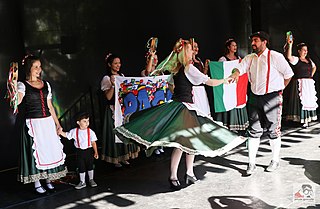
Italian Brazilians are Brazilians of full or partial Italian descent, whose ancestors were Italians who emigrated to Brazil during the Italian diaspora, or more recent Italian-born people who've settled in Brazil. Italian Brazilians are the largest number of people with full or partial Italian ancestry outside Italy, with São Paulo being the most populous city with Italian ancestry in the world. Nowadays, it is possible to find millions of descendants of Italians, from the southeastern state of Minas Gerais to the southernmost state of Rio Grande do Sul, with the majority living in São Paulo state. Small southern Brazilian towns, such as Nova Veneza, have as much as 95% of their population of Italian descent.

Paulo Schroeber was a Brazilian guitarist, most known for his work with Almah. He was also in the bands Astafix, Hammer 67, Burning in Hell and Fear Ritual.
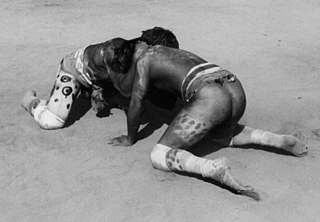
Huka-huka is a Brazilian folk wrestling style of the indigenous people of Xingu, in the state of Mato Grosso. It is performed as a ritual fight during the ceremony of Kuarup.

Isabelle Tuchband is a contemporary Franco-Brazilian plastic artist. She has taken part in a number of national and international exhibitions and developed several artistic projects, including a public masterpiece in São Paulo.
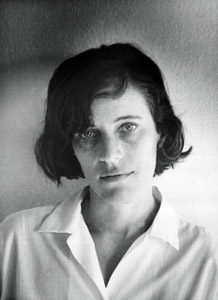
Eleonore Koch, also known as Lore Koch, was a German-born Brazilian painter and sculptor. She was best known for paintings that evoke the memory of everyday objects, while also exploring the sensory nature of painting through a tension between color planes and line.
Alice Brill was a German-born Brazilian photographer, painter, and art critic.
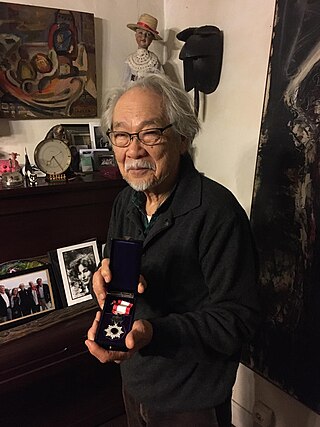
Flavio-Shiró is a Japanese-Brazilian visual artist. Regarded as an influential postwar Brazilian painter, he is known for his dark and disturbing paintings that merge elements of abstract expressionism and surrealism. He is one of the main representatives of abstract expressionism in Brazil.
Tadashi Kaminagai was a Japanese painter, draftsman and mold maker who traveled through many countries and produced his works mainly in Japan, Brazil, and France, where he also had exhibitions. Before becoming a painter, Kaminagai followed the monastic life, first in Japan and then in the Dutch East Indies, now Indonesia, until he abandoned his life as a Buddhist monk to become an artist. He was successful as a modurer, with a series of works for famous artists, but later became known also for his work as a painter. He influenced artists and was the teacher of some of them. His works were presented in national and international exhibitions. Furthermore, he participated in the Seibi-kai, having contact with numerous painters, including many of Japanese origin.
Francisco Domingos "Chico" da Silva was a Brazilian painter associated with naïve art and modernist Brazilian painting. Da Silva is considered one of the first Brazilian artists of indigenous heritage to achieve prominence in Brazil and abroad.